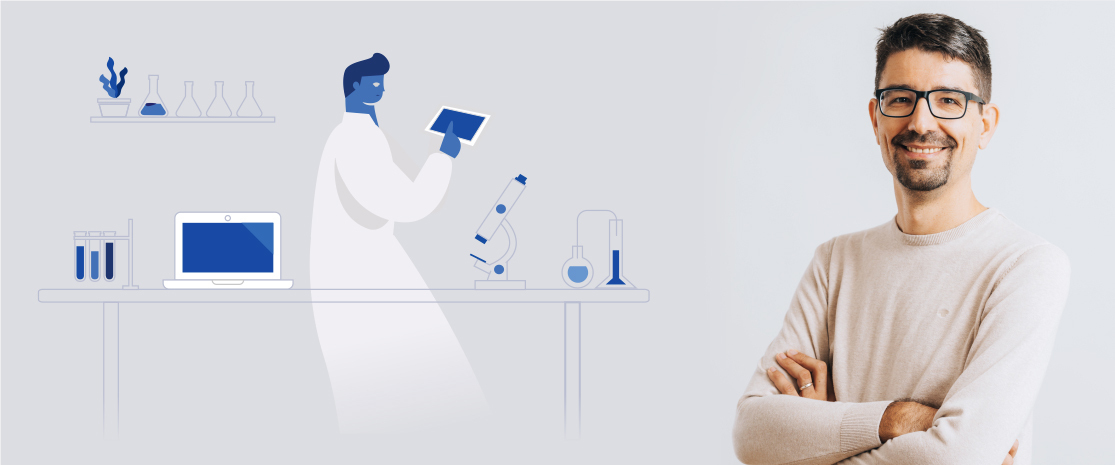Software development and the digitalization of laboratories
With the rapid evolution of technology, scientific research, an area that should rely on advanced technology, managed to lag behind. Matjaz Hren, PhD, with a background in biology and biotechnology, helped develop SciNote, an electronic lab notebook, as it’s VP of product development by listening to the users and implementing changes.
By implementing aspects of product psychology into product development and taking empathy into account, with the combination of analytical and more conventional product management approaches, such as data-driven decisions, the users are being listened to and understood. A scientific background is a large aid in the development process. With helpful feedback provided by its users, SciNote is able to evolve in a way that it works as a whole, and not a mosaic of partial solutions that cater to individual users’ needs and do not work as a whole. Good data management practices and basic management practices are constantly being incorporated into the product, as it is part of SciNote’s mission to promote good data management practices, believing that is one of the fundamentals of efficiency.
“These efforts result in a product that is able to provide consistent solutions for planning and managing work and data.”
Matjaz Hren, VP of product development, SciNote
As data management, or rather the absence of data management practices in science and research, poses a challenge, especially to users who embark on digitalizing their research process for the first time, the tool-to-user interface becomes even more important. Users are often frustrated with the fact that they need to start paying attention to how they plan data collection and how they collect it, which is a key to the successful digitalization of research. Therefore, the cooperation between the tool and the user is necessary. Once this is established, the challenge of getting the most out of a data model, such as the ELN, arises. It is here that interactions with third-party software and instruments come into play, as well as finding an efficient way for entering data at the bench. Lastly, the most advanced users are interested in discovering new knowledge, new information, from existing data. Here is where approaches such as data warehouses, data visualization, querying and artificial intelligence come into play.
TetraScience plays a vital role in connecting third party data sources, such as laboratory instruments with SciNote, and making it easier for SciNote users to get the data in. The number of different laboratory instrument types and data formats is simply staggering. Therefore, solution providers, such as TetraScience are necessary.
Looking towards the future, Matjaz’s vision for the digitalization of laboratories includes concepts that would break down the interface between the physical laboratory and its digital counterpart, resulting in smart laboratory furniture that will be connected to the digital lab and will make interfacing with digital tools, such as ELNs, much easier every step of the way. Digital twins also come into play, a concept where an instrument, or entire lab, will have its digital twin, making it easier to interact with the instrument or lab remotely. A more immediate future predicts brining digital tools, such as SciNote, into the lab at the bench by making use of tablet computers, which are extremely underused. They could be step one, which would already be able to eliminate the need for use of paper in the lab and make the research process more efficient by eliminating the redundant steps of data reentry. For now, a greater trust will be placed in cloud applications and placing a greater importance on the understanding that digitization is not done by buying a digital tool, such as SciNote, but rather that this is step one, while the rest is entirely dependent upon the user, adapting their process, because non-digital and digital processes are rarely perfectly aligned.
Adaptation is crucial for SciNote in terms of moving forward, as well as the understood importance that the user and the software must cooperate in order to achieve maximum user output.
Read more about SciNote and TetraScience partnership in THIS ARTILCE.



